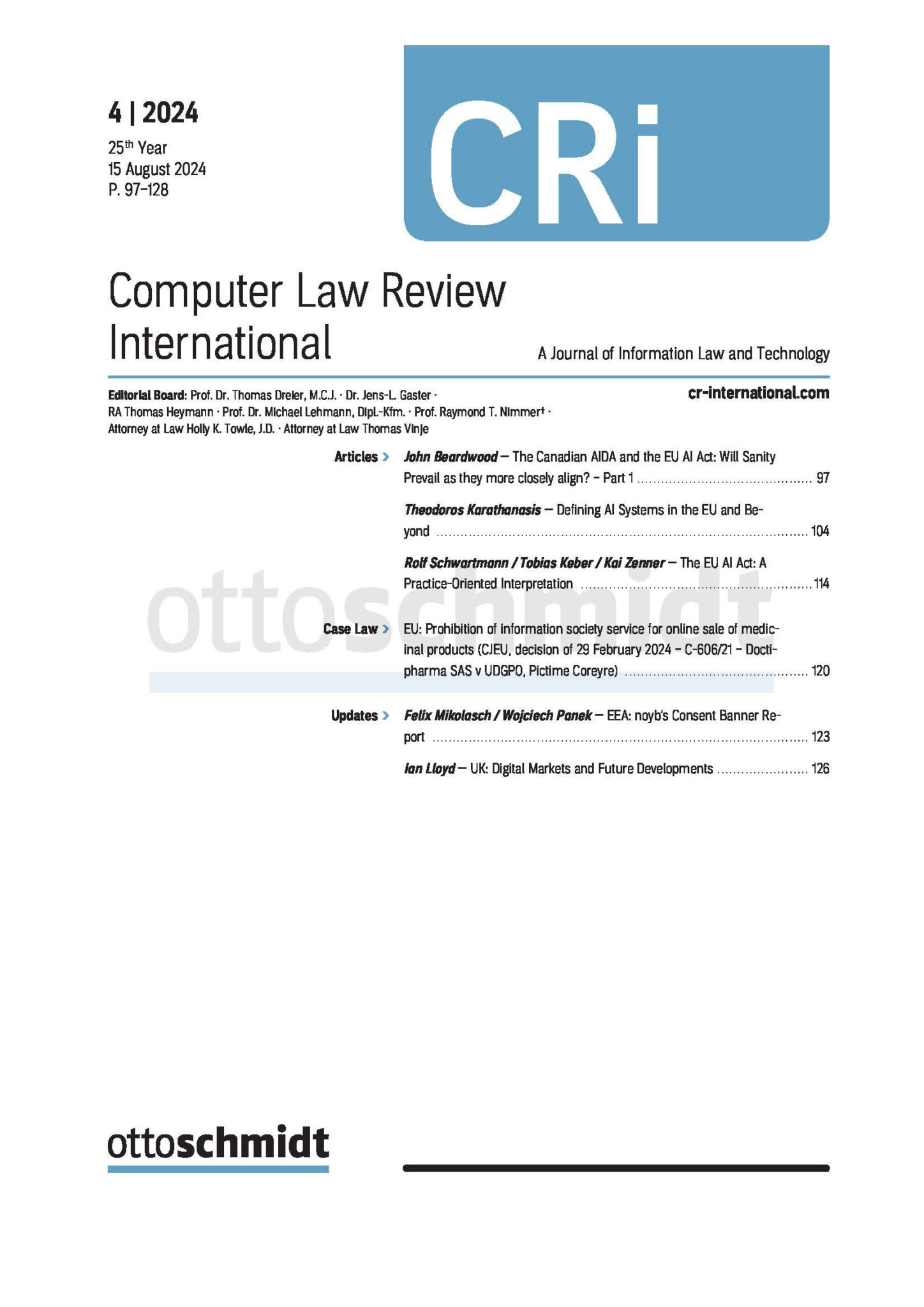The Chair AI Regulation shares the article recently published in the Computer Law Review International (CRi) by its research fellow, Dr. Theodoros Karathanasis, on the global outreach of the European Union AI Act’s norms.
The aim of the article was to assess the global reach of the European Union’s regulatory influence on AI. Based on the final version of the EU AI Act, the analysis focused on how AI systems are defined and presents the hypothesis that the more rigid the definition of AI systems is, the less global the reach of the EU AI Act‘s standards will be, especially in states with a strong tendency towards AI sovereignty. The definition retained by in the final AI Act has the advantage of being futureproof, clear, precise, and comprehensive regarding which cases fall under the definition, in contrast to the EU’s global competitors. But is it practical? In other words, are legal professionals able to easily de-termine whether a case falls under the definition? The article shows there are persistent differences between the EU and its main global competitor, the US, on what constitutes an AI or AI system. It also acknowledges the need of monitoring the legislative processes in different countries to see whether or not the EU approach to defining an AI regime will be adopted. As persistent differences could hamper the global reach of EU AI legislation. The author recommends thus to foster cooperation with third countries on a common AI taxonomy and terminology, if the EU wants to ensure the global reach of the AI Act.
Cite: Karathanasis T., “Defining AI Systems in the EU and Beyond: Assessing the Global Outreach of the AI Act’s Norms”, Computer Law Review (CRi) 4, 2024, p. 97-128
The article is available here
A previous version of the working document can be also found here at SSRN.
These statements are attributable only to the author, and their publication here does not necessarily reflect the view of the other members of the AI-Regulation Chair or any partner organizations.
This work has been partially supported by MIAI @ Grenoble Alpes, (ANR-19-P3IA-0003) and by the Interdisciplinary Project on Privacy (IPoP) commissioned by the Cybersecurity PEPR (ANR 22-PECY-0002 IPOP).


